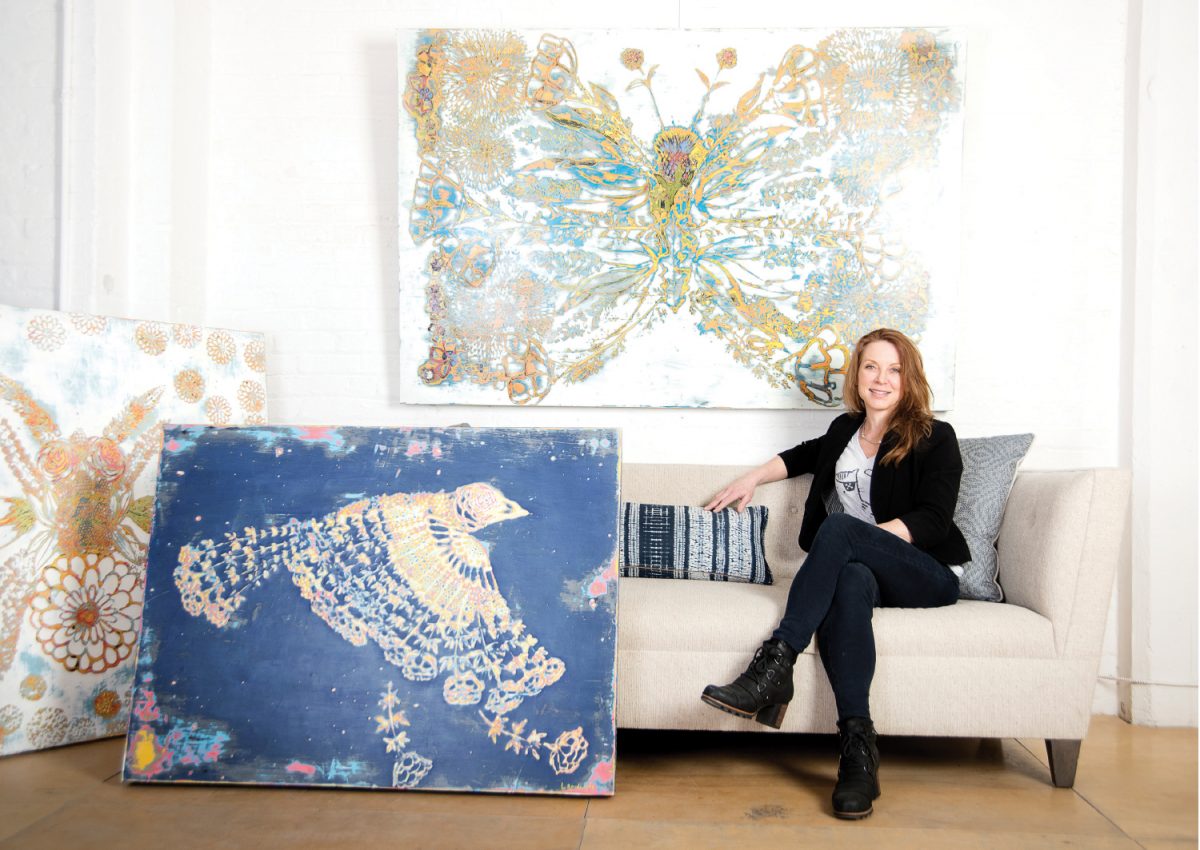
Portrait by Morgan Ford
Parents often cringe when their kids major in art. The paint on the canvas and the ink on the diploma are barely dry when many of those grads head to the back of the unemployment line. That’s why Leslie Rowland (who paints under the name L. Rowland) didn’t pursue a career as an artist.
But the arts pursued Rowland until she fully surrendered.
“I didn’t really come to terms with being an artist until I moved to Asheville about five or six years ago,” Rowland admits. “My dad wasn’t supportive of my artistic tendencies. He said, ‘If you go into art, you’re going to always be poor.’ I was ashamed and embarrassed about being an artist. Instead I got these different science degrees, because I was also curious about the intricacies of nature. As a child, I could watch ants at work, all day long. I had a desire to find a way to be a part of healing the planet. I knew we could coexist without destroying it. But I never knew how to make both sides of my mind come together, the art side and the science side.”
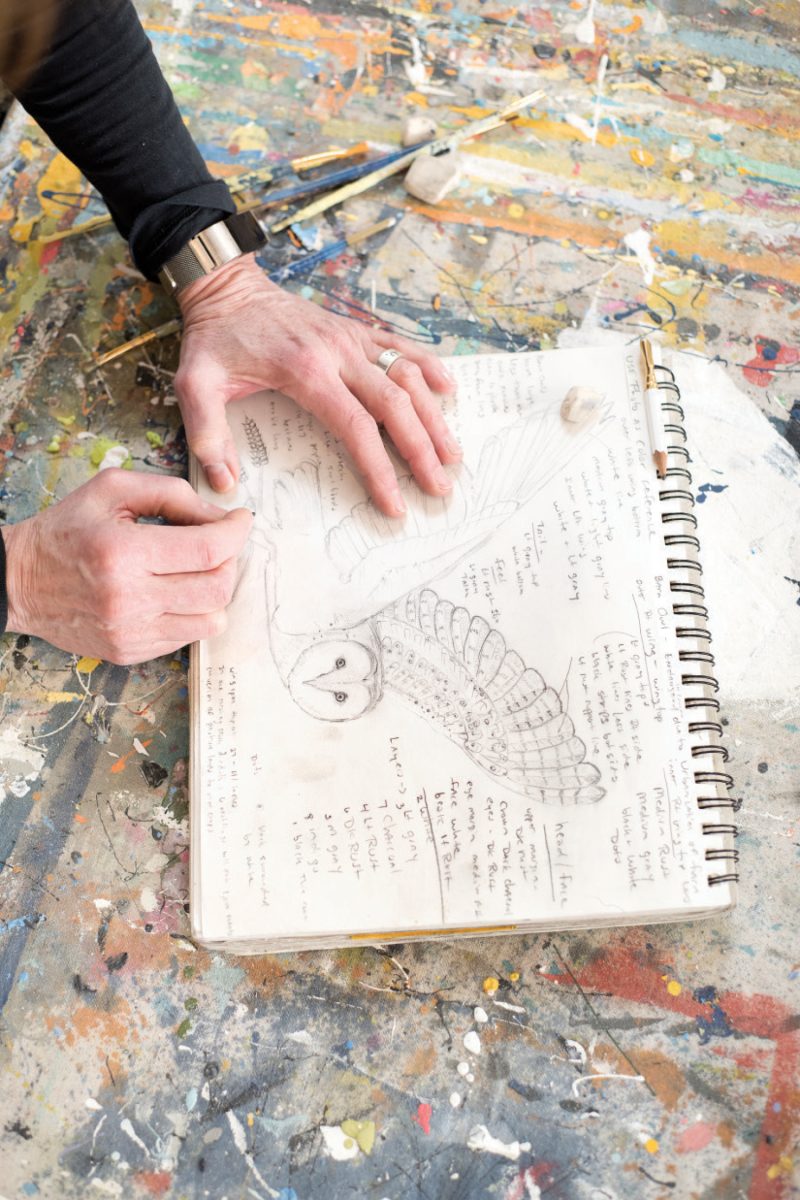
Rowland, who has no formal training as an artist, earned a Masters Degree in environmental policy and management. “But whenever I would go and look for a job,” she recalls, “it was the weirdest thing. The only doors that ever opened for me — and this happened repeatedly — were in art.” (This included a stint as the creative director of Picture Source-Somerset, a 42-year-old wholesale-art company.)
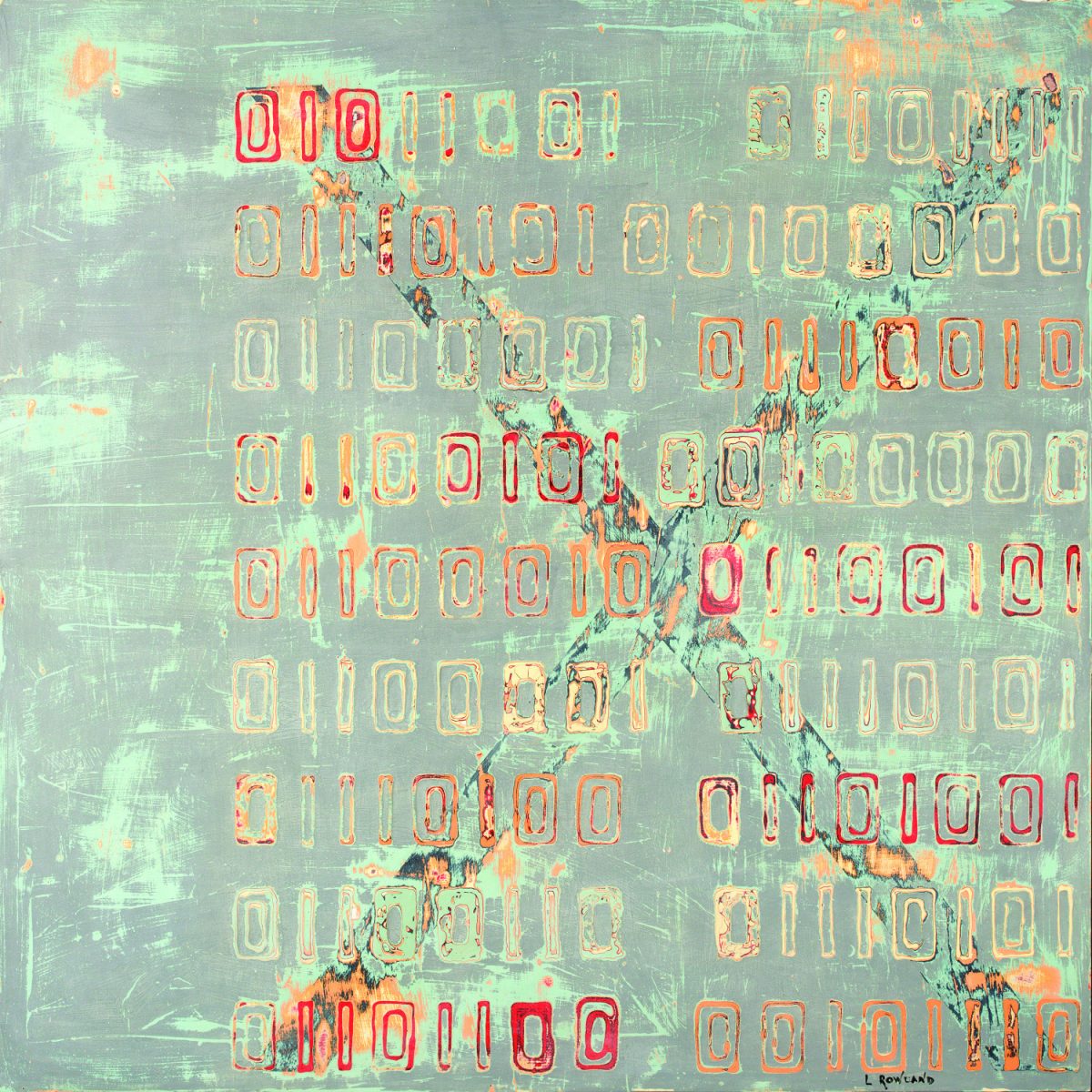
Then she realized that if people learned more about how the environment works, and how dependent everyone is on the environment, they might care more about it. Using her scientific background, she began to create art that attempted to explain and celebrate that interdependent, symbiotic relationship. “I wanted to make science more palatable through art. But one of my biggest challenges was that I wanted to say things that are really hard to explain. The titles of my early paintings were three paragraphs long.”
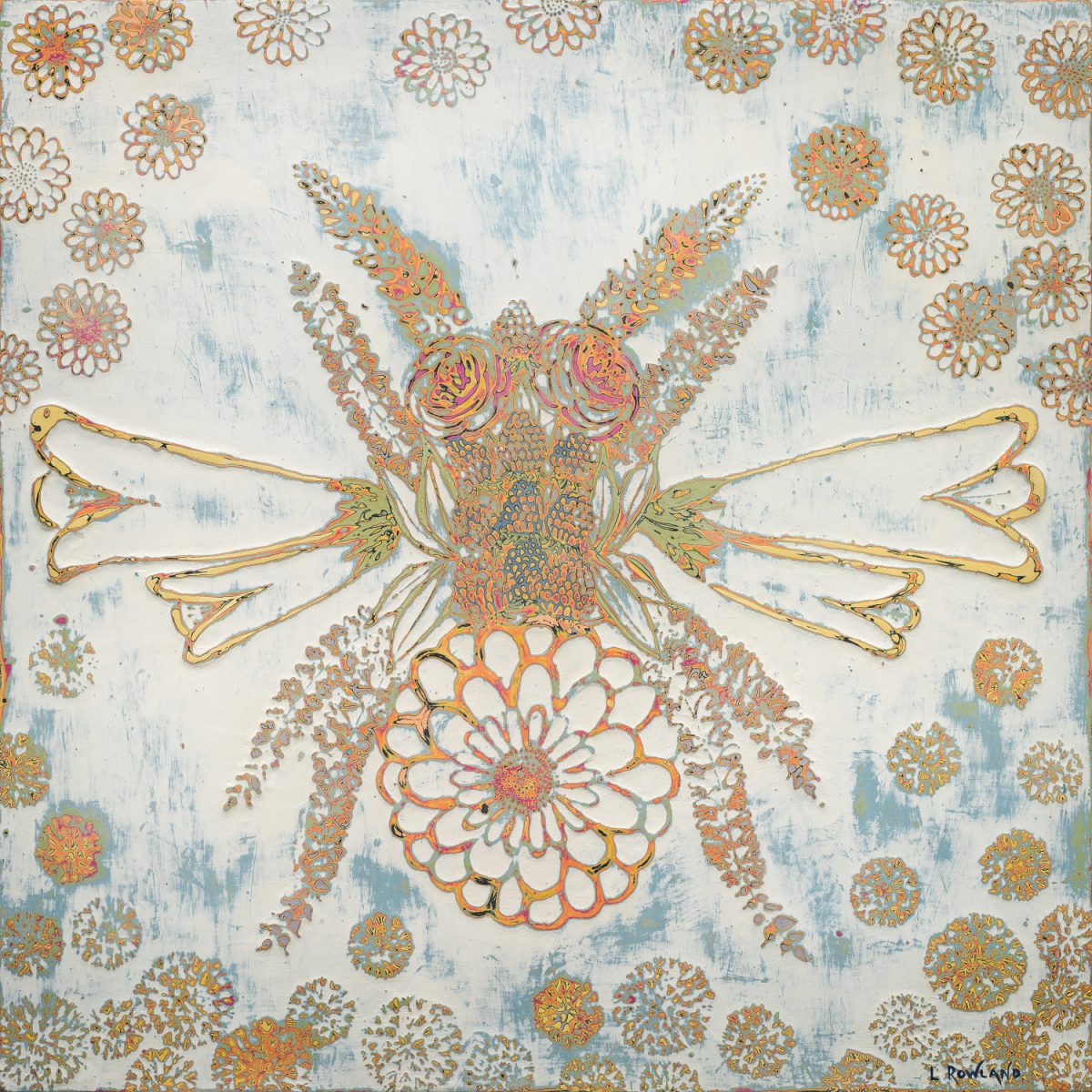
Rowland eventually experimented with a kind of micro-mosaic painting style, and found her voice. “I will take all the things the bee pollinates, and use those to puzzle together a picture of a bee,” she explains. “Each of those integral parts are interconnected, and connected to us. Or a barn owl with two sprigs of wheat in its talons. That owl gives a gift to us, through predation, by eating rodents that would otherwise destroy our crops. If we protect the owl, we don’t need to use pesticides that harm the planet to grow crops.”
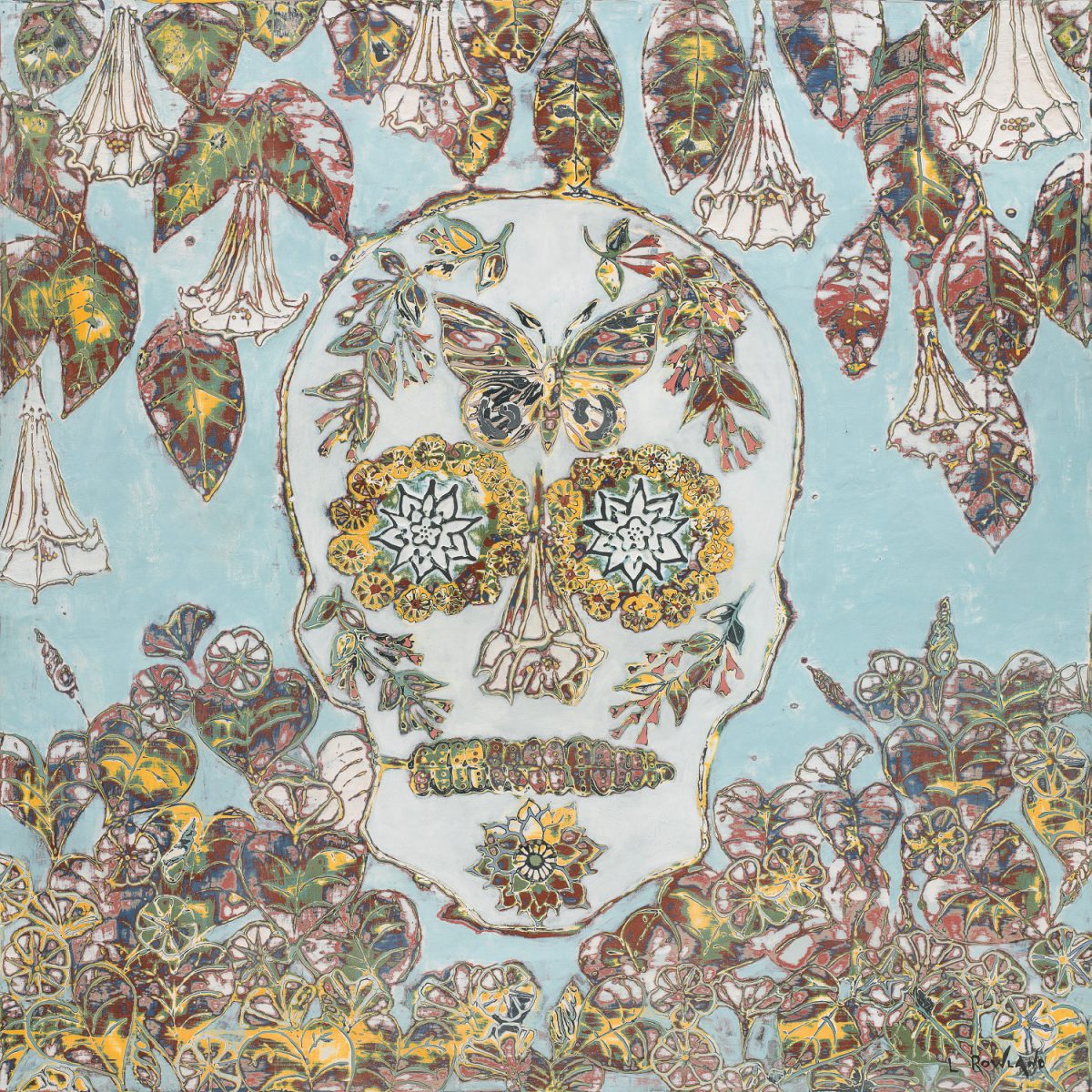
Rowland’s piece titled This is Night shows a skull made up of night-blooming flowers pollinated by moths. She chose the skull as a reminder that life is temporary, and that humans rely on pollinators for survival. “It’s called ecosystem services,” she says. “What a tree does for us. What water does for us. What each of the different species does to make life better for us.”
Her proprietary painting technique involves sketching and painting on a wooden panel. Then she physically buries the image by applying dozens of layers of solid paint on top. She finally excavates it by sanding, washing, and polishing. This has proven to be an effective, albeit risky, process.
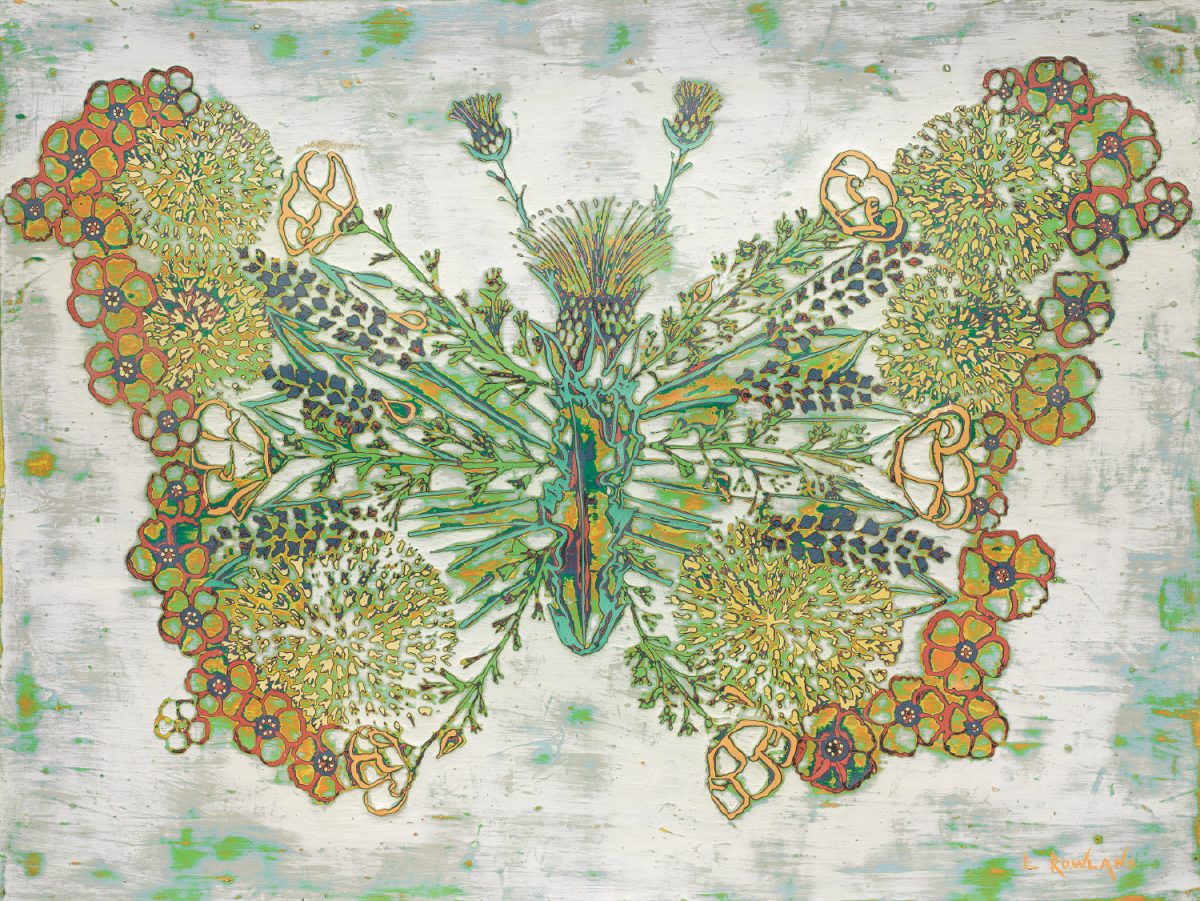
“I can’t see what I painted underneath until I remove layers, and it’s easy to go right through to the wood and lose the painting along the way. That’s heartbreaking, when you can’t find it.” The first time one of her paintings went missing right in front of her eyes, Rowland had worked on it for weeks, virtually nonstop. Then she accidentally went too deep and it was lost forever. “I learned that I have to be very painstaking and careful, so it’s like a delicate archaeological dig.”
Rowland also paints digitally captured images of sound waves. “I love music, and when I hear it, I have an emotional response. Color can also elicit an extremely powerful response. So it’s cool to paint music. I have a program on my computer that displays the sound waves. I will take screen shots of sections of a song that make beautiful patterns. Then I will graph it out on a panel and reproduce it, choosing colors based on how the music makes me feel.
“I’ll paint some Miles Davis or the Beatles or the Rolling Stones. I’ve painted monks chanting. It’s part visceral and part science. Art is one of the strongest forms of communication, and it emits intention long after it’s made.”
L. Rowland, Suite 3A in the Phil Mechanic Studios (109 Roberts St., River Arts District, Asheville). For more information, check out lrowlandart.com. Also on Instagram (@lrowlandart, @lrowlandfinecontemporaryart) and on Facebook (L. Rowland Art).
